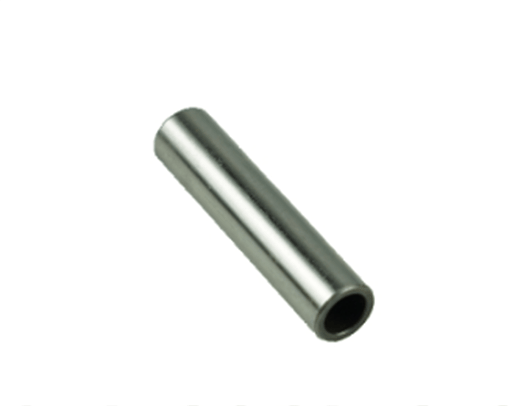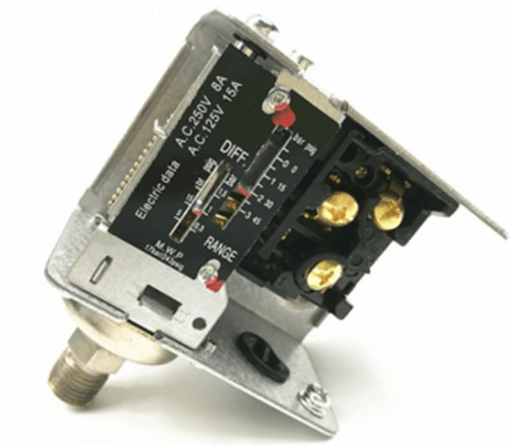As both manufacturers and end customers know, in a refrigeration or air conditioning system, the compressor is the equipment core by continuously sucking back and exporting refrigerant. Once the compressor breaks down or stops working, the whole cooling system will be interrupted.
Video 1: Working principle of piston compressor (Source from: YouTube)
Piston compressor is widely used in large and medium-sized cold storage. Here we will explain in detail the structure, working principle, advantages and disadvantages and common fault diagnosis of piston compressors.
1. Structure of Piston Compressor
According to component functions, a piston compressor can be divided into six systems.
|
Functional Systems |
Components |
|
Motion system |
crankshaft, |
|
piston and connecting rod components |
|
|
coupling, |
|
|
Valve system |
valve plate |
|
valve spring |
|
|
Sealing system |
piston ring |
|
oil seal |
|
|
gasket |
|
|
packing |
|
|
Body system |
crankcase |
|
cylinder block |
|
|
cylinder sleeve |
|
|
cover plate |
|
|
Lubrication system |
lubricating oil pump |
|
oil filter |
|
|
pressure regulating valve |
|
|
Safety and energy regulation system |
safety valve |
|
energy regulation device |
Table 1. 6 functional systems and their components of piston compressor.
The following is a detailed explanation of core components of a piston compressor.
1.1 Body

Image 2: Complete body of Bitzer compressor 2CES-3
The compressor body includes the cylinder block and crankcase. Generally, it is made of high strength gray cast iron.
1.2 Cylinder

Image 3: Cylinder of piston compressor
Cylinder is a key component of a piston compressor. According to different pressure, discharge capacity and gas properties of the compressor, users should select cylinders made of different materials and with appropriate structures.
Basic requirements for cylinders are: strength and stiffness, good cooling, lubrication and wear resistance.
1.3 Crankshaft

Image 4: Crankshaft of piston compressor
By changing rotary motion of the motor into reciprocating linear motion of the piston through the connecting rod, crankshaft transmits the full power of the compressor. It is one of the key components of motion system of the compressor.
1.4 Connecting Rod

Image 5: Connecting rod of piston compressor
Connecting rod is the connecting piece between crankshaft and piston, which transforms the rotary motion of crankshaft into reciprocating motion of piston, and transfers power to piston to work on gas.
The connecting rod comprises a connecting rod body, a small end bush, a big end bearing bush and a bolt.
1.5 Piston Group

Image 6: Piston group of piston compressor
Piston group is the generic name of piston, including piston pin and piston ring. Driven by the connecting rod, the piston group makes reciprocating linear motion in the cylinder, so as to form a variable working volume together with the cylinder, and therefore to complete the process of suction, compression and exhaust.
1.6 Piston

Image 7: Compressor piston
The piston can be divided into cylinder and disc. Piston material is generally aluminum alloy or cast iron.
1.7 Piston Pin

Image 8: Piston pin of piston compressor
The piston pin is used to connect the small end of the piston and the connecting rod. It bears complex alternating load when working.
1.8 Piston Ring
It is a circular ring with a cut on it, and the cut may be straight, inclined or overlap. The angle of the inclined cut is 45 degrees.
The piston ring is comprised by a gas ring and a oil ring. The gas ring works as a seal between the piston and the cylinder wall to prevent the compressed air from leaking from the gap between the piston and the cylinder wall. The oil ring is to distribute oil and scrape off the excess lubricating oil on the cylinder wall.

Image 9: Piston ring of piston compressor
1.9 Shaft Seal
Shaft seal is for preventing compressed gas from leaking out along the extended end of crankshaft, and also for preventing outside air from leaking in when the pressure in crankcase is lower than atmospheric pressure.

Image 10: Shaft seal of piston compressor
1.10 Crankcase Heater
The crankcase heater ensures the normal lubrication of the refrigerant heater in the crankcase by separating the refrigerant in the crankcase.
Users should install a crankcase heater in any environment. When the compressor runs with the crankcase temperature 20 ℃ higher than the environment temperature, the crankshaft heater will be powered off. When the compressor stops, the heater will be powered on.

Image 11: Crankcase heater of piston compressor
1.11 Compressor Motor Protection Device
To prevent overload or overheating of the compressor, the motor is built in with 6 PTC thermistors. Generally speaking, L, N are for power supply, 11, 14 are connected to the control circuit, and 12 is the alarm indicator.

Image 12: Motor protection device(Siemens Motor protection SIPROTEC 7SK85)
1.12 Oil Pressure Safety Device
Oil pressure safety device monitors the pressure difference between the inlet and outlet of the oil pump to ensure the lubrication of the compressor. It is usually less than 0.7 bar and has 90 ± 10 seconds' delay. The oil pressure difference of the compressor is 2.5 ~ 3kg / cm.
The oil pressure difference of single stage compressor is calculated as:
Δ P = Oil Pump Outlet Pressure - Suction Pressure.
The oil pressure difference of two-stage compressor is calculated as:
Δ P = Oil Pump Outlet Pressure - Intermediate Pressure.

Image 13: Oil pressure control device
2. Working Principle of Piston Compressor
The work of the piston compressor is completed by the continuous change of the working volume composed of the cylinder, the air valve and the reciprocating piston in the cylinder.
If the volume loss and energy loss in the actual work of the piston compressor are not considered (that is, during an ideal working process), the work completed by the crankshaft of the piston compressor can be divided into four processes: compression, exhaust, expansion and suction.
2.1 Compression Process
When the piston is in the lowest position (called the inner dead center or bottom dead center), the cylinder is filled with low-pressure refrigerant vapor inhaled from the evaporator, and the suction process ends.
Driven by the crankshaft and connecting rod, the piston starts to move upward. At this time, the suction valve is closed, the working volume of the cylinder is gradually reduced, the gas in the cylinder is compressed, and the temperature and pressure are gradually increased. The process of gas rising from the low pressure of suction to the exhaust pressure in the cylinder is called compression process.
Compression process is generally regarded as isentropic process.
2.2 Exhaust Process
The piston continues to move upward when the pressure of the gas in the cylinder rises slightly above the pressure of the gas in the exhaust chamber.
When the exhaust valve is opened, the high-pressure steam in the cylinder is discharged out of the cylinder under constant pressure until the piston reaches the top position (called the outer dead center or top dead center), and the exhaust process ends.
2.3 Expansion Process
When the piston moves in the cylinder, the upper end of the piston does not coincide with the top of the cylinder completely, but there is a certain space to ensure the safety and reliability of its operation. This space is called the residual space volume.
Due to the residual space volume, when the piston moves to the top dead center, the exhaust is terminated, and a small part of the high pressure gas in the cylinder can not be discharged. When the piston moves in reverse direction, only when the high pressure gas expands to a pressure slightly lower than the suction pressure, the suction valve will open and the low-pressure gaseous refrigerant can enter the cylinder.
2.4 Suction Process
As the piston moves downward, the expansion process of high pressure gas in the residual space volume ends, the suction process begins. The low pressure gas is sucked into the cylinder until the piston moves to the bottom dead center.
By far the compressor has completed a working cycle composed of compression, exhaust, expansion and suction.
After that, the piston moves downward again, repeating the above four processes, and so on. This is the ideal working process and principle of piston compressor.
2.5 Refrigeration Process of Piston Compressors
The refrigeration process is carried out in the closed circulation system composed of ammonia compressor, cooler, regulating valve and evaporator.
After the ammonia liquid pressure was reduced through the regulating valve, it enters the evaporator, it absorbs the heat of the cooled medium and evaporates, so as to reduce the medium temperature and achieve the purpose of refrigeration.
The evaporated ammonia gas is sucked back by the compressor, compressed and discharged into the cooler to cool the ammonia gas and condense it back to ammonia liquid.
Next, it enters the evaporator to evaporate again through the regulating valve, so as to complete the work of refrigeration.
3. Advantages and Disadvantages of Piston Compressor
3.1 Advantages of Piston Compressor
* The piston compressor can be used in a wide range of pressure environments, regardless of the flow rate to reach the required pressure.
* The piston compressor has a high thermal efficiency and low unit power consumption.
* Strong adaptability. That is, exhaust range of piston compressor is wide and will not be affected by the pressure, which makes the compressor capable to meet a wide range of pressure and cooling capacity requirements.
* The material requirements for piston compressor are relatively low, and it can be made by common steel materials, and it's easy to manufacture at low cost.
* The technology of piston compressor is mature, with rich experience accumulated in production and application.
* The device system of piston compressor is relatively simple.
3.2 Disadvantages of Piston Compressor
* The rotation speed is not high.
* The machine is large and heavy.
* Complex structure with many vulnerable parts, and it may result in large cost in maintenance.
* The discrete air flow may cause gas pulse.
* There is heavy vibration during operation.
Though there are weakness of piston compressor, it is used in various occasions for its overall advantages compared with other types of compressors.
Piston compressor has been the most widely used type and the model with the largest batch production in refrigeration industry.
Related Info
Factors to Consider When Selecting Rotary EncodersPiston Compressor Basics - Structure, Working Principle, Advantages and Disadvantages
Maintenance of Absolute Encoders
Air Compressor Troubleshooting and Solutions
Hydraulic Piston Motor: Types, Working Principle and Pros and Cons (2)



